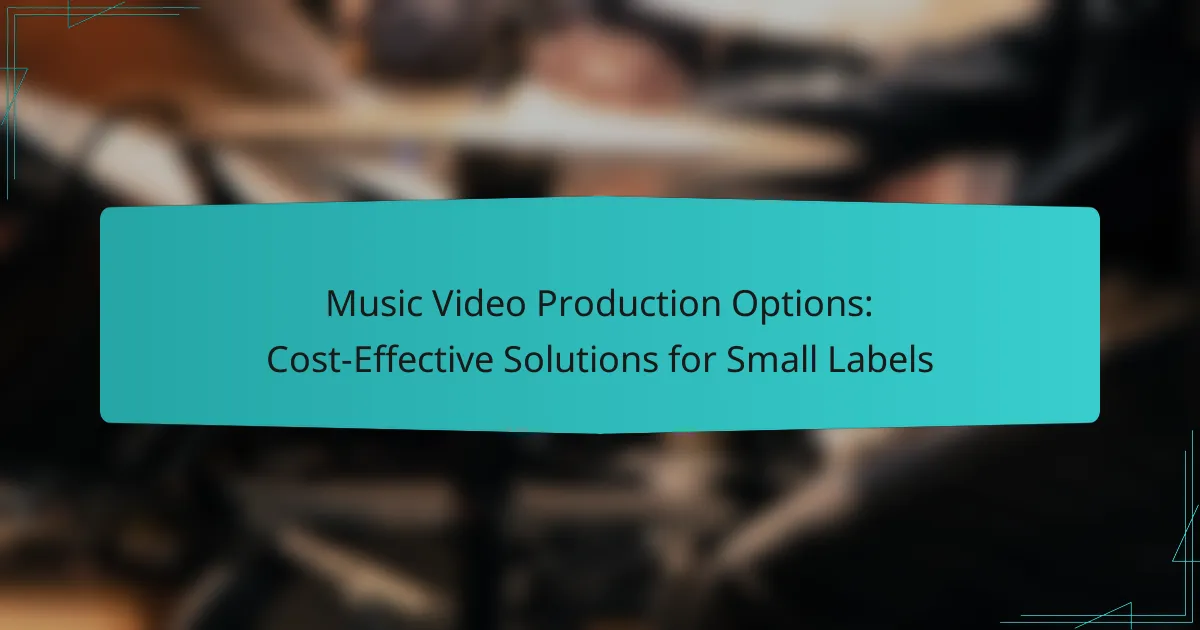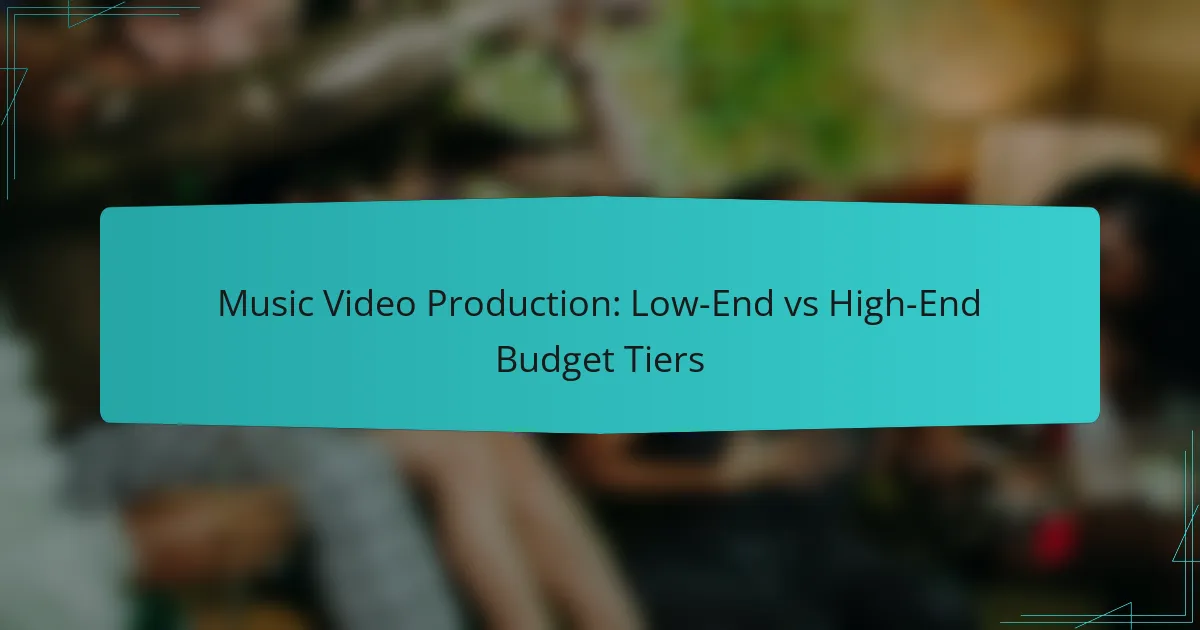For small music labels, producing high-quality music videos doesn’t have to break the bank. Cost-effective solutions such as DIY techniques, hiring freelance videographers, and collaborating with local film schools can help create engaging content while keeping expenses low. By understanding the key factors that influence production costs, labels can make informed decisions that align with their budgets.
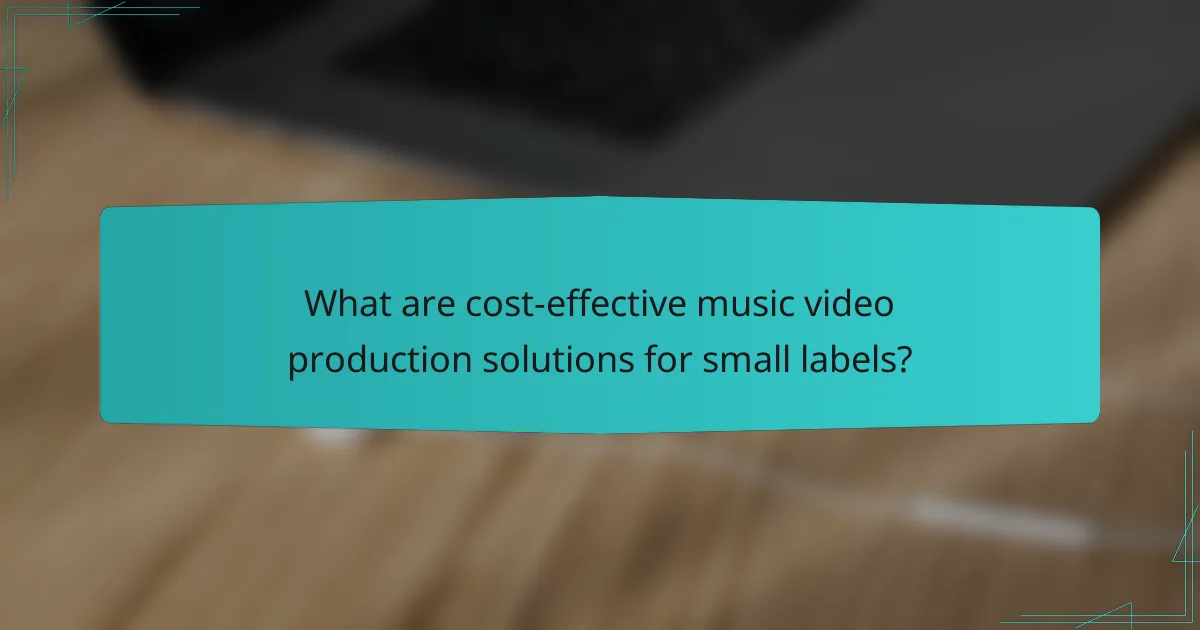
What are cost-effective music video production solutions for small labels?
Cost-effective music video production solutions for small labels include DIY techniques, hiring freelance videographers, utilizing online editing tools, and collaborating with local film schools. These options can significantly reduce costs while still delivering quality content that engages audiences.
DIY video production techniques
DIY video production allows small labels to create music videos using readily available equipment, such as smartphones and basic editing software. This approach can be budget-friendly, often requiring only a few hundred dollars for props and locations.
To maximize quality, focus on good lighting and sound. Simple techniques like storyboarding and using natural settings can enhance production value without incurring high costs. Avoid overly complex shots that require expensive gear or extensive editing.
Using freelance videographers
Hiring freelance videographers can be a practical solution for small labels looking for professional quality without the high costs of a full production team. Rates for freelancers can vary widely, typically ranging from $300 to $1,500 per project, depending on experience and complexity.
When selecting a freelancer, review their portfolio to ensure their style aligns with your vision. Clear communication about your budget and expectations is essential to avoid misunderstandings and ensure a successful collaboration.
Leveraging online video editing tools
Online video editing tools offer small labels an affordable way to produce polished music videos. Platforms like Canva, WeVideo, and Adobe Spark provide user-friendly interfaces and templates that simplify the editing process.
Many of these tools operate on a subscription basis or offer free versions with limited features. Consider your specific needs and the level of customization required when choosing a platform. Always check for any hidden costs associated with premium features.
Collaborating with local film schools
Partnering with local film schools can provide access to aspiring filmmakers eager to gain experience. This collaboration can be mutually beneficial, as students often seek projects to build their portfolios, while labels can obtain quality content at reduced rates.
Establish clear expectations regarding timelines and deliverables to ensure a smooth working relationship. Offering a small budget or incentives, such as credits in the video, can motivate students and enhance their commitment to the project.
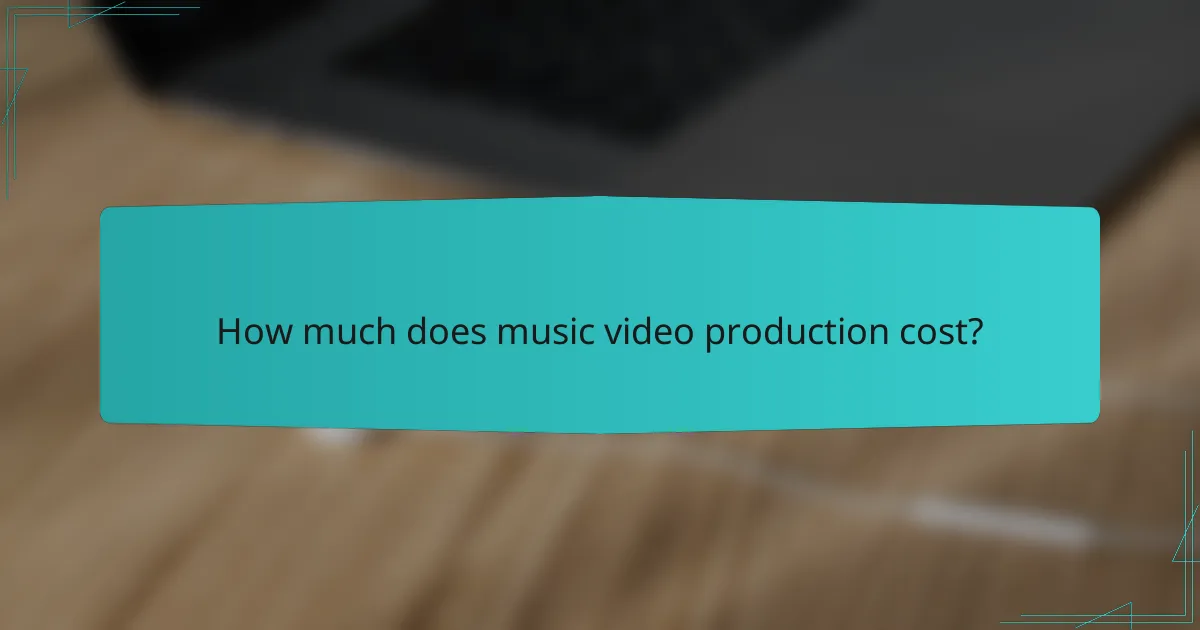
How much does music video production cost?
The cost of music video production can vary significantly based on factors like production quality, location, and the team involved. For small labels, understanding these costs is crucial to making informed decisions that fit their budgets.
Average costs for DIY productions
DIY music video productions can range from a few hundred to a few thousand dollars, depending on equipment and resources. Basic setups using smartphones or consumer cameras can keep costs low, while investing in lighting and sound equipment may increase expenses.
Consider utilizing free editing software and local talent to further reduce costs. However, remember that while DIY options are budget-friendly, they may lack the polish of professional productions.
Freelancer pricing ranges
Hiring freelancers for music video production typically costs between $500 and $5,000, depending on their experience and the project’s complexity. A skilled videographer may charge more but can bring valuable expertise to enhance the final product.
When choosing a freelancer, review their portfolio to ensure their style aligns with your vision. Clear communication about your budget and expectations can help avoid misunderstandings and ensure a smoother collaboration.
Costs for hiring production companies
Production companies generally charge from $5,000 to $50,000 or more for music video projects, influenced by the scope and quality of the production. Larger companies often provide comprehensive services, including scripting, filming, and post-production, which can justify the higher costs.
When considering a production company, request detailed quotes and breakdowns of services offered. This transparency helps you understand what you’re paying for and ensures that the final product meets your artistic goals.
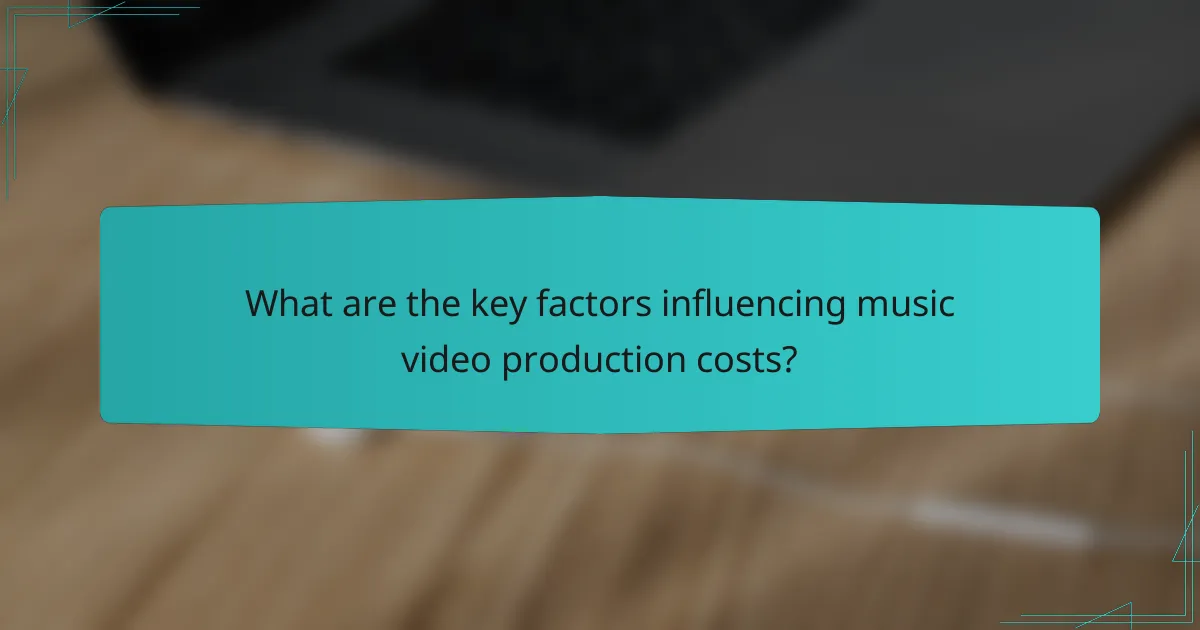
What are the key factors influencing music video production costs?
The key factors influencing music video production costs include the video’s length, location, logistics, and the equipment used. Understanding these elements can help small labels make informed decisions to manage their budgets effectively.
Length of the video
The length of a music video significantly impacts production costs. Generally, shorter videos, around 2-3 minutes, tend to be less expensive due to reduced shooting and editing time. However, longer videos may require additional resources, including more complex storytelling and multiple locations.
When planning, consider that each additional minute can increase costs by a notable percentage, depending on the complexity of the production. Aim for a length that aligns with the song’s narrative while being mindful of budget constraints.
Location and logistics
Location plays a crucial role in determining music video production costs. Filming in public spaces may require permits, which can vary in price based on the location and local regulations. Private venues often charge rental fees, which can add to the overall budget.
Logistics, such as transportation and accommodation for the crew, can also contribute significantly to costs. Planning shoots in accessible locations can help minimize these expenses, making it easier for small labels to stay within budget.
Equipment and technology used
The type of equipment and technology utilized in music video production can greatly influence costs. High-end cameras, drones, and specialized lighting can enhance video quality but come with higher rental or purchase prices. For small labels, using more affordable equipment or renting can be a cost-effective solution.
Additionally, consider the expertise of the crew operating the equipment. Hiring experienced professionals may increase upfront costs but can lead to better quality and efficiency, ultimately saving money in the long run. Balancing quality with budget is essential for effective production planning.
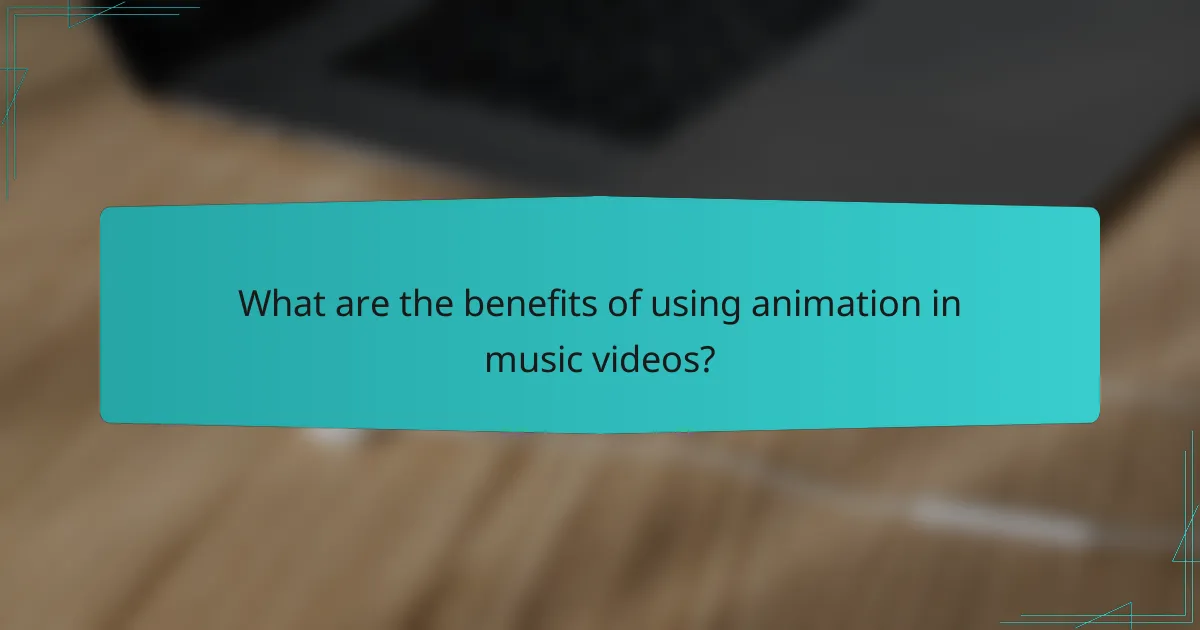
What are the benefits of using animation in music videos?
Animation in music videos offers unique advantages, including flexibility in visual storytelling and cost savings compared to live-action production. It allows artists to convey complex themes and emotions in a visually engaging way without the logistical challenges of filming with actors and locations.
Cost-effectiveness of animated videos
Animated videos can be significantly more affordable than traditional live-action productions. Costs for animation can range from a few hundred to several thousand dollars, depending on the complexity and length of the video. This makes animation a viable option for small labels with limited budgets.
Additionally, animated videos often require fewer resources, such as locations, props, and crew, which can further reduce expenses. By leveraging animation, small labels can allocate their budgets more effectively, investing in creative ideas rather than logistical hurdles.
Creative storytelling opportunities
Animation provides unparalleled creative freedom, allowing artists to visualize concepts that may be difficult or impossible to achieve with live-action. This medium can bring abstract ideas to life, using vibrant colors and imaginative characters to enhance the narrative. For instance, a song about dreams can be illustrated with surreal landscapes and fantastical creatures.
Moreover, animation can easily adapt to various styles, from 2D cartoons to 3D graphics, enabling artists to match the visual aesthetic closely with their music genre. This versatility helps in crafting a distinctive identity that resonates with the audience.
Appeal to diverse audiences
Animated music videos can attract a wide range of viewers, including children, teens, and adults. The engaging visuals and imaginative storytelling can captivate audiences who may not typically engage with a specific music genre. For example, a colorful animation can draw in younger viewers while still appealing to older fans through nostalgic themes.
Furthermore, animation can transcend language barriers, making it accessible to international audiences. This broad appeal can enhance an artist’s reach and increase their fan base across different cultures and demographics.

How can small labels maximize their video production budget?
Small labels can maximize their video production budget by focusing on essential elements, leveraging social media for promotion, and forming partnerships with local artists. By prioritizing these strategies, labels can create impactful videos without overspending.
Prioritizing essential production elements
Identifying and prioritizing essential production elements is crucial for small labels. Focus on key aspects such as storyline, visuals, and sound quality, while minimizing costs on less critical features like elaborate sets or special effects.
Consider using a simple shooting location, such as a local park or a band member’s home, to cut down on expenses. Additionally, invest in good lighting and sound equipment, as these can significantly enhance the overall quality of the video without breaking the bank.
Utilizing social media for promotion
Social media platforms are powerful tools for promoting music videos, especially for small labels with limited budgets. By sharing teasers, behind-the-scenes content, and engaging posts, labels can generate buzz and reach a wider audience without significant advertising costs.
Utilize platforms like Instagram, TikTok, and YouTube to connect with fans and encourage shares. Creating a consistent posting schedule and engaging with followers can help build a loyal fan base that amplifies the video’s reach organically.
Building partnerships with local artists
Collaborating with local artists can enhance video production while keeping costs low. Small labels can exchange services or resources, such as sharing filming locations or pooling talent, which can lead to creative and unique video concepts.
Consider organizing joint projects or events that feature multiple artists, allowing for shared promotion and increased visibility. This not only helps in budget management but also fosters a sense of community and support among local musicians.
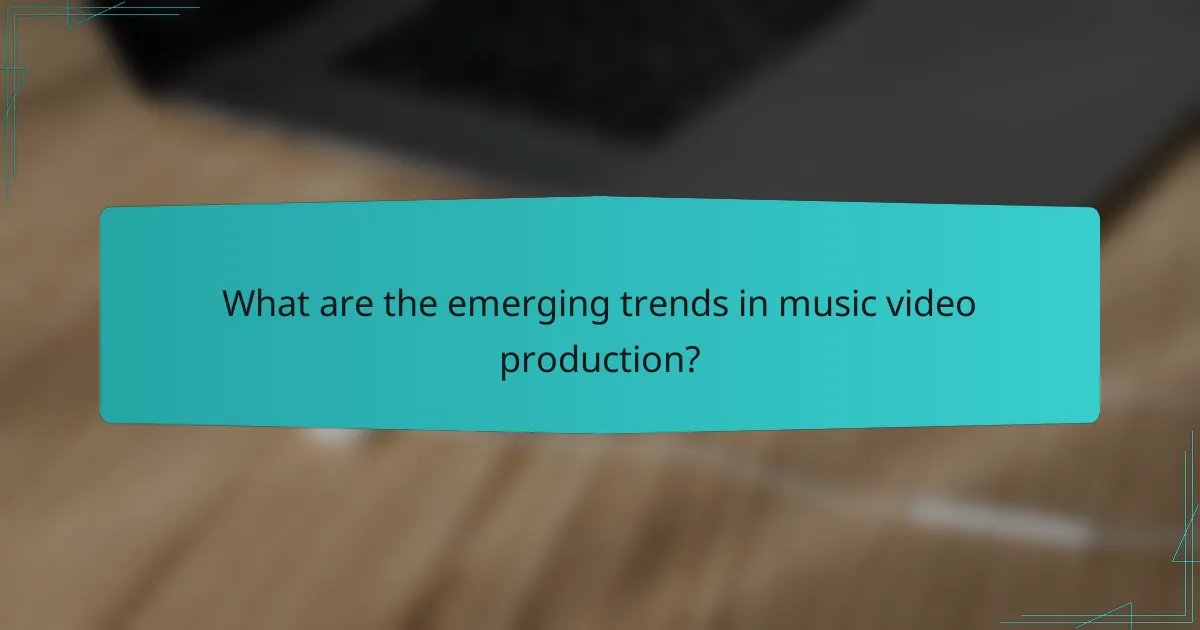
What are the emerging trends in music video production?
Emerging trends in music video production focus on creating engaging and interactive content that resonates with audiences. These trends leverage technology to enhance viewer experience and provide innovative storytelling methods.
Interactive and immersive experiences
Interactive music videos allow viewers to influence the narrative or visuals, creating a personalized experience. This can be achieved through clickable elements or branching storylines that respond to user choices.
For example, a video might allow viewers to select different scenes or endings, enhancing engagement. Small labels can use platforms like YouTube or specialized apps to implement these features, often at a lower cost than traditional production methods.
Incorporating virtual reality
Virtual reality (VR) in music videos immerses viewers in a 360-degree environment, offering a unique way to experience music. This technology can transport fans into a virtual concert or a visually stunning landscape that complements the song.
To effectively incorporate VR, small labels should consider budget-friendly options like using 360-degree cameras or partnering with VR content creators. While initial costs may be higher, the potential for increased viewer engagement and shareability can justify the investment.
